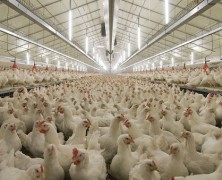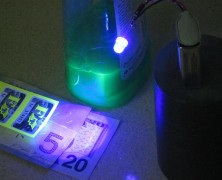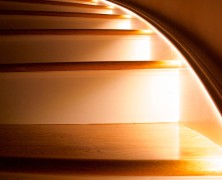Chickens raised using an intelligent poultry LED lighting system have been found to produce higher quantity and quality of eggs, develop into maturity at a faster rate and enjoy an improved standard of health as compared to chickens raised under traditional light sources. Using LED-based technology chicken farmers can: Lower lighting costs Increase musculoskeletal development and weight gain Induce earlier maturity for hens destined to lay eggs Increase egg output and quality Regulate reproduction cycles Increase length of reproductive life Furthermore, farmers can adjust the color of the LED lights to promote certain outcomes. For example, using red light, farmers were able to stimulate sexual activity and reduce the amount of feed necessary to produce each egg — even though there was no difference in the size, or quality of the egg. The red LED lights were able to increase egg production by up to 38 per hen while decreasing food consumption by 20 percent. Green lights promotes chicken growth at early stages of development, while blue light promotes growth later along the life cycle of the chicken. Blue and green light improved feed conversion (the efficiency at which an animal converts animal feed into desired output such as eggs or meat) by up to 4%, and therefore reduced cost per pound of the chicken by up to 3%. Why is Poultry LED Lighting Superior to Traditional Poultry Lighting? Visible “white” light is actually composed of a range of colors, which can be viewed by refracting light through a dispersive prism. Incandescents, the most common form of poultry barn lighting, are missing many critical portions of the full spectrum found in sunlight. For instance, an incandescent bulb produces a highly diminished amount of both greens and blues. CFLs produce only narrow bands of color in...
LED Strip Lights For Commercial Refrigeration And Food Display...
posted by Taran Volckhausen
As with many other businesses, the key to running a successful grocery store is to sell high quality, attractive products while maintaining low operating costs. Installing LED strip lights for commercial refrigeration and food display helps increase profit margins by increasing product appeal while also lowering operating costs. Visual merchandising is known to have a strong effect on customer buying behavior, as shown in a study published by the International Journal of Engineering Science and Innovative Technology. The study found that 85% of customers sampled felt that attractive colors and lighting make them more likely to spend more time in a store. According to the researchers, respondents mentioned that effective lighting in particular helped them to “select the right products, reduce the time wasted and to feel relaxed” during their shopping experience. If you want customers to buy food, you must make the food look appealing. Many conventional forms of artificial light fail to accurately reveal colors as they would appear under natural sunlight — but LED lighting is not a conventional source of light. LED lighting: color as it was meant to be Advances in LED technology have vastly increased the level at which LED lights can faithfully reproduce colors. Think about the decision that goes into buying a fresh mango. If the lighting source renders the colors of the fruit drab and lifeless, it’s going to be a tough sell to get customers to fork over the cash for this pricey delicacy. However, imagine those mangos under bright, natural looking, evenly distributed LED strip lights, which reproduce the fiery reds and energetic oranges in the precise manner they would be rendered by tropical daylight. LEDs also make great accent lights to spotlight high-margin fresh food displays. Adding LED lighting to fresh produce displays...
What Are The Uses For UV LED Light?...
posted by Taran Volckhausen
Until relatively recently there was no such thing as a commercially available ultraviolet (UV) LED light. But as LED technology continues to develop and power densities increase, UV LED lights are expanding into the market and replacing more traditional alternatives. Ultraviolet (UV) light is an invisible form of electromagnetic energy (light energy) that travels at a higher frequency and carries more energy than visible light. UV lightwaves were originally called “chemical rays” when first discovered in the 19th century because of their ability to cause certain substances to change at the molecular level. Here are a few examples of the many applications for UV LED lighting: Industrial and Cosmetic Curing UV curing is a process that uses UV light to instantly cure (or “dry”) inks, coating and adhesives through cross-polymerization of photosensitive materials. UV LED technology is emerging as an ozone gas- and mercury-free option for chemical curing with both industrial and cosmetic applications. Nail polish cures have traditionally been done using unregulated UV lamps, but controversy arose earlier this year over a study published in the Journal of the American Academy of Dermatology which reported a potential danger of skin cancer. The study found that LED lamps were much safer for this application, due to the lower frequency of UV light they emit. Analytic Tools Due to UV lighting’s ability to make certain materials visible to the human eye, it has been used for quite some time as an analytic tool. One common use for ultraviolet light sources is checking UV watermarks to validate currency, or identifying bodily fluids in forensic crime scenes. Scientific and Biological A 2012 study published in Applied Entomology and Zoology showed that UV LED lights were an effective method for dealing with the West Indian sweet potato weevil. This disagreeable insect...
LED Signage Lighting
posted by Flexfire LEDs
If your company has a physical office or storefront, chances are you’ve at least looked into commercial signage at some point. If you already have a sign, chances are equally high that you’ve dealt with increased maintenance and energy costs as well as burnt out bulbs and tubes. As many business owners are discovering, these issues are now being addressed thanks to the versatility of LED signage lighting. Because of their tiny size, LED chips can be aligned and configured in a variety of ways to illuminate infinite shapes of indoor and outdoor commercial signage. Flexfire LEDs strip lights, for instance, are perfect for this sort of installation. They are thin, flexible, and come with adhesive backing, meaning they can be applied to follow various angles such as those found in channel lighting. With optional IP weatherproofing, LED strip lights are also resistant to water and dust. It’s important to note that unlike other lighting technologies, LEDs produce direct, precise illumination, a big part of why they’re used in televisions and smartphones. For this reason, LEDs are a perfect backlighting source for letters and company logos in box sign applications as well. Additionally, improved technology means that the initial cost of LED lights has been dramatically reduced over the past few years, removing what has been the main barrier for many business owners. There are four main advantages to using LED lighting for commercial signage as opposed to fluorescent or neon tubes: energy efficiency, durability, safety, and overall light quality. Let’s start by addressing energy efficiency, as it directly affects your company’s bottom line. Energy Efficiency High quality LED and fluorescent signage products are both capable of producing in excess of 100 lumens per watt, meaning they will produce a great deal of light...
LED Walkway Lighting
posted by Flexfire LEDs
Use bright, durable, and energy-saving LED walkway lighting to illuminate indoor staircases, garden paths, office hallways, and other dimly lit traffic areas. In your home or office, having illuminated stairs is a dramatic aesthetic improvement that will also increase safety, especially for seniors and small children. Despite its benefits, this improvement has traditionally been overlooked due to concerns about increased energy consumption and difficult installation. LED walkway lighting can be used to illuminate your staircase while avoiding these concerns – Flexfire’s UL Listed LED strip lights use 75% less energy than standard incandescent bulbs, generate virtually no heat, and are easy to install with versatile products such as UltraBright™ and ColorBright™ series LED strip lights. Further, high quality LED lights last up to 50,000 hours, meaning they’ll brighten your day for more than a decade. These benefits apply when using LEDs in other sorts of high traffic areas as well. LED walkway lighting can be used to beautifully accentuate home garden paths, office hallways and outdoor corporate plazas, with multiple color and brightness options to choose from. Wherever you go, use LEDs to light the way. Choose one of our convenient Flexfire LEDs strip light kits to suit the appropriate brightness, length and color of your LED walkway lighting project: ...










